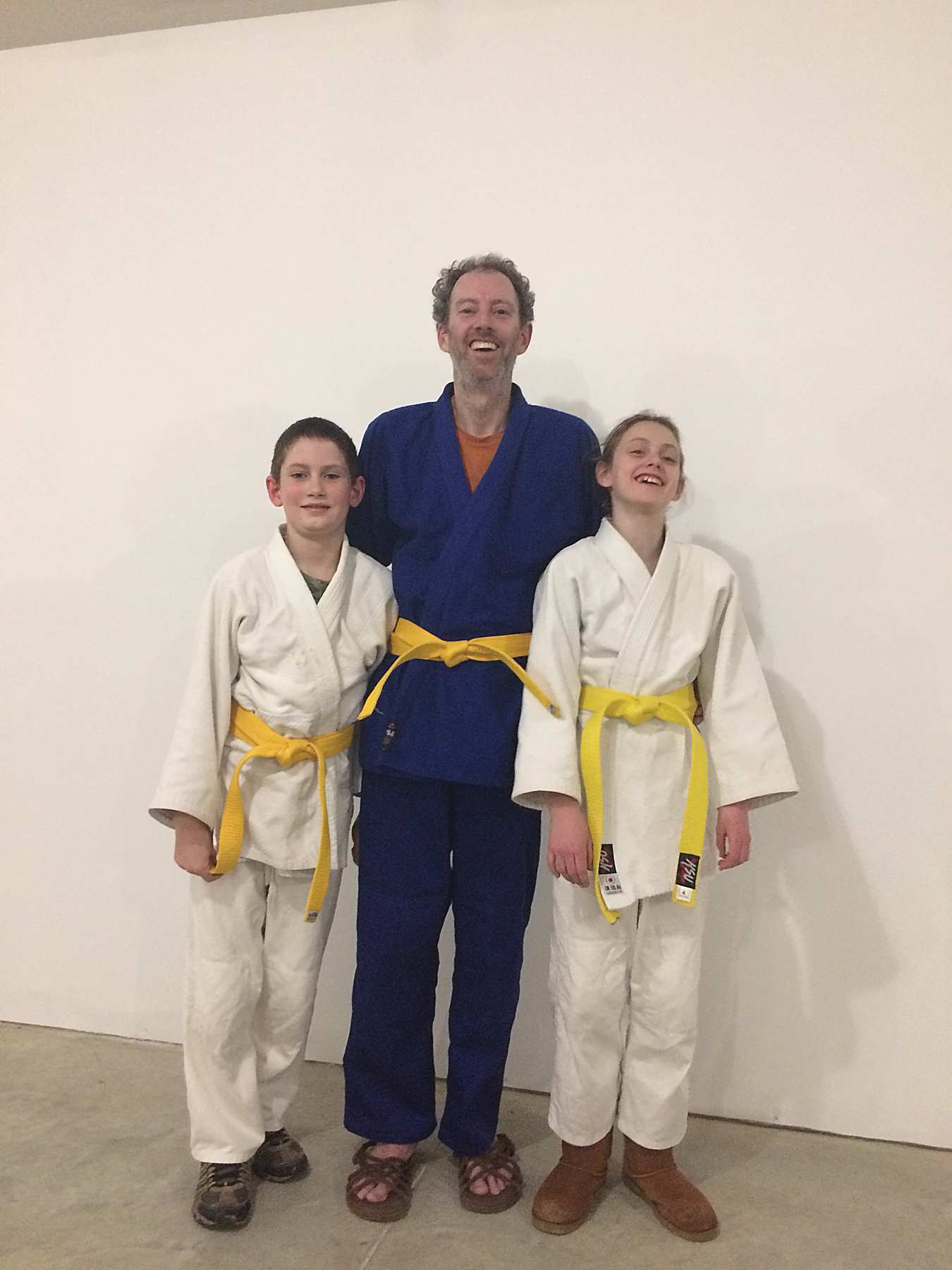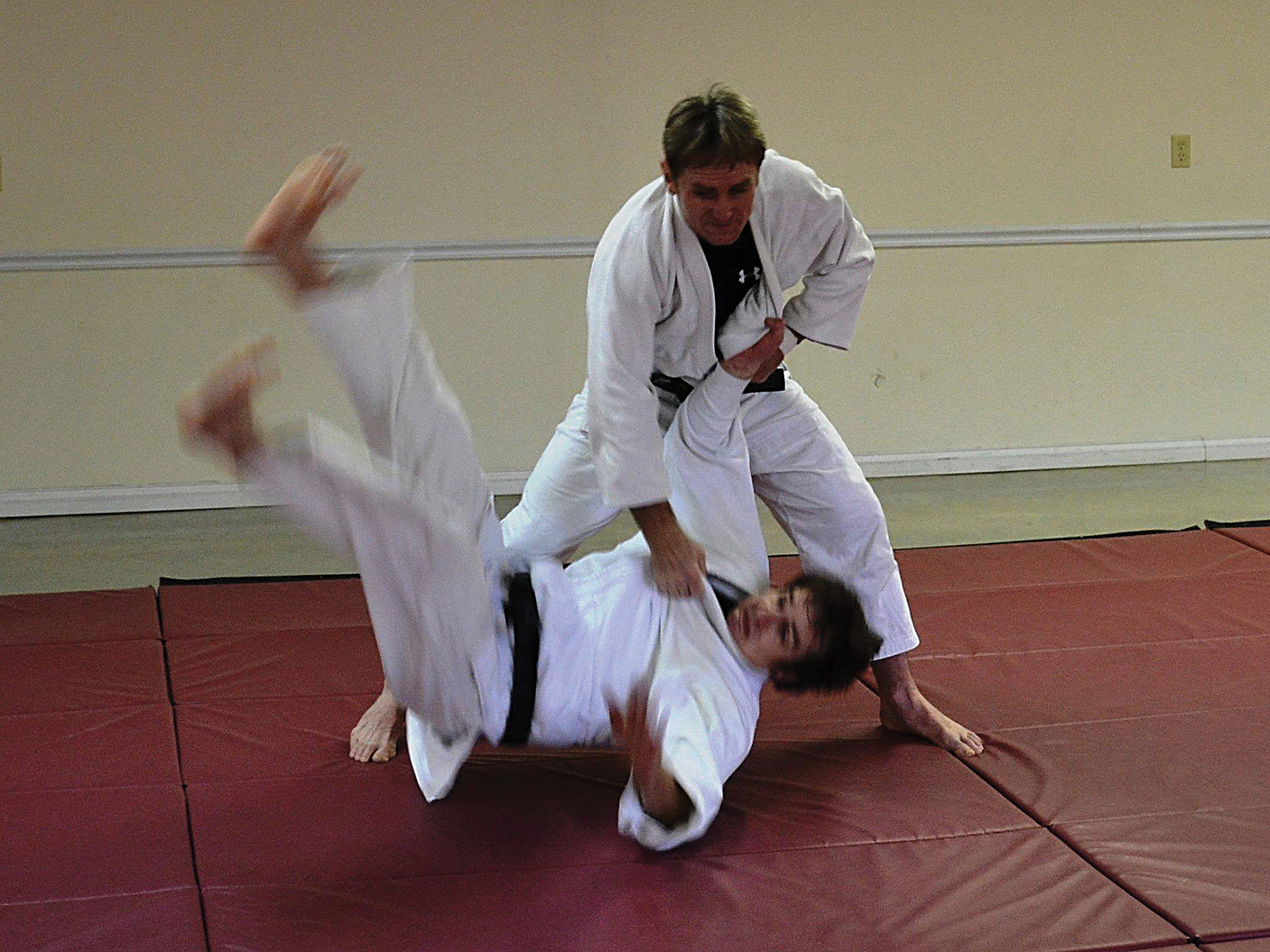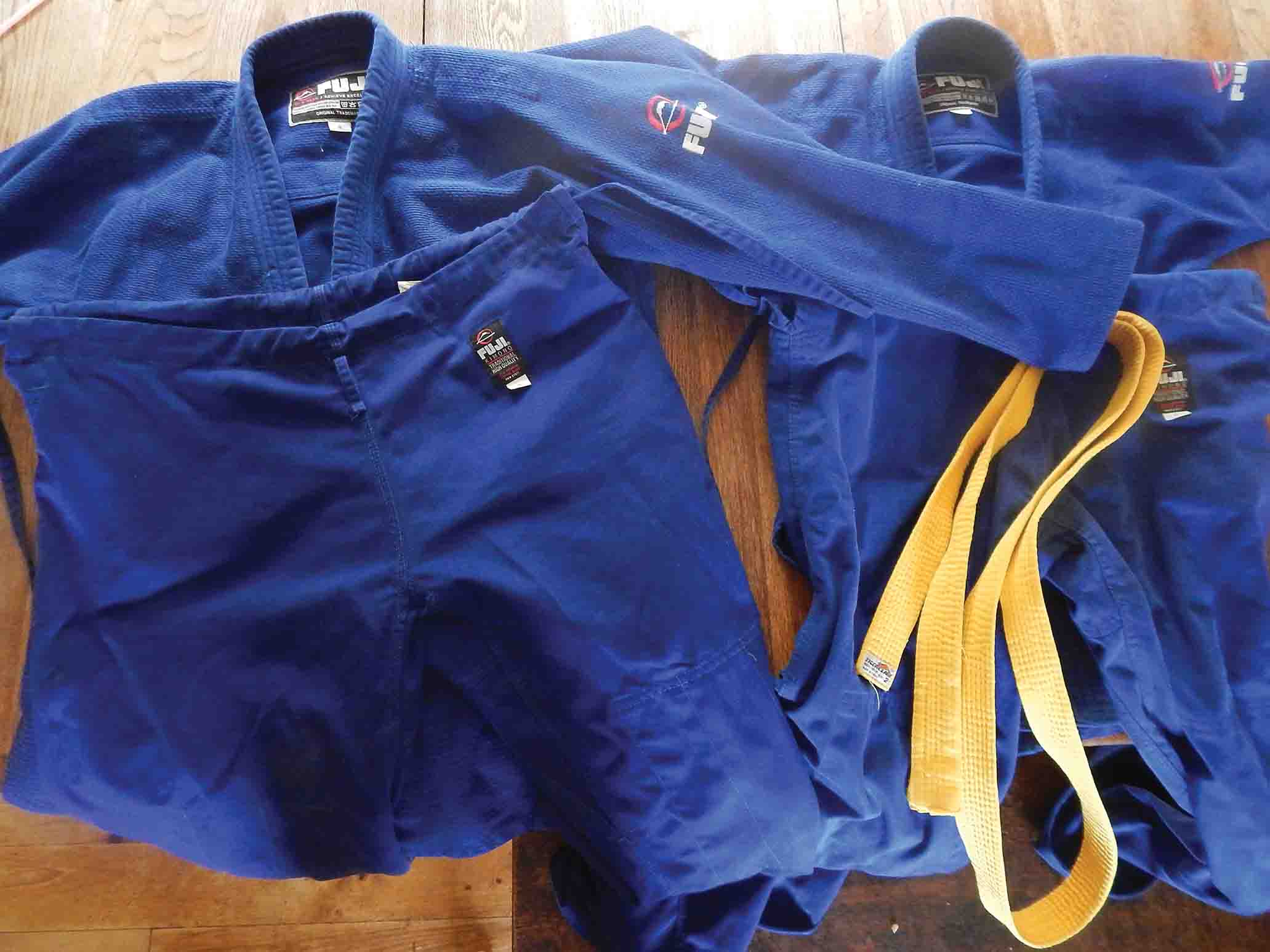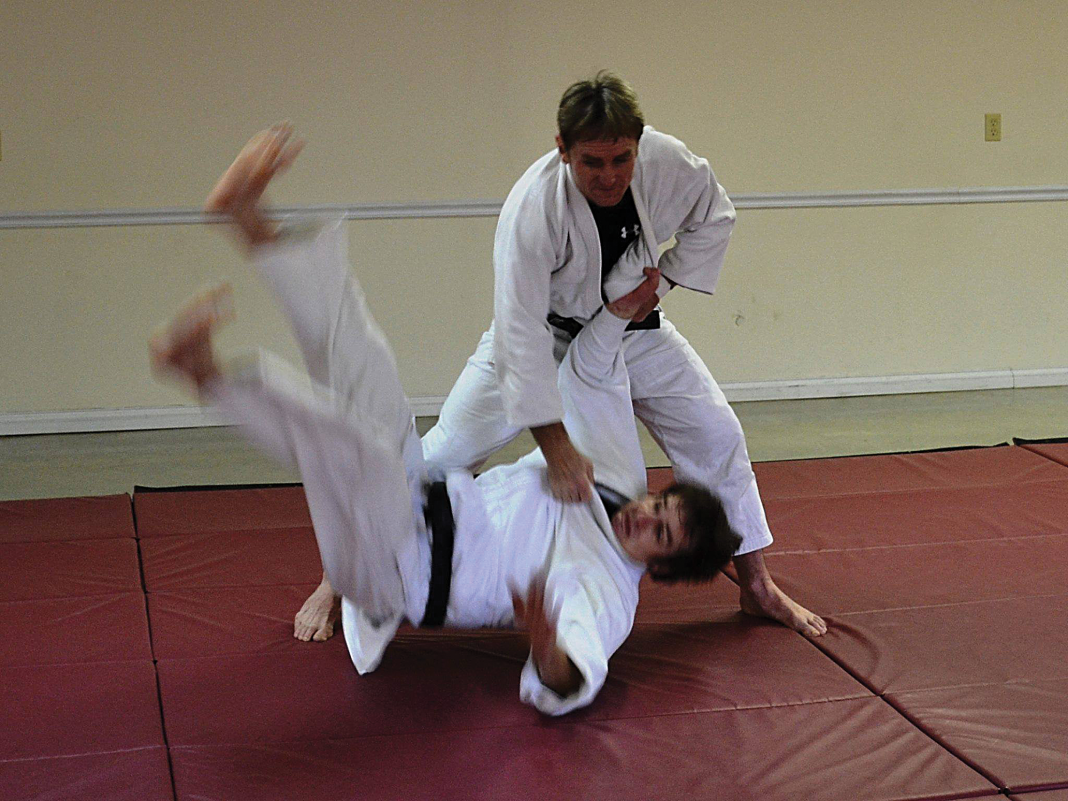By John Moody
I grew up in a family that hunted and fished, but I was never taught how to defend myself. My small size (I didn’t break 100 pounds until my senior year of high school) coupled with my lack of self-defense skills resulted in a large number of unpleasant childhood experiences. While self-defense training wouldn’t have prevented every physical altercation I was subject to, studies show that they would have made a significant difference.
Empty-handed skills, as many modern people call them, are invaluable and irreplaceable. They give us options which allow us to make better decisions in the spur of the moment, or when a dangerous situation arises. I wanted my kids to have better options for dealing with bad people than the ones I had, so as our oldest two kids approached their teenage years, it was time for them to develop formal self-defense skills. I wanted my kids to acquire such skills while still young, limber, and quick-to-heal.
We started searching for a martial arts school with a few requirements in mind. First, I wanted a discipline that didn’t emphasize striking. We would get to that later, when the kids were more mature and when their physical development was more complete. Most homesteading kids are already significantly stronger than their peers, so I didn’t want mine combining that strength with striking skill until they had the requisite maturity to go with it. I know first hand, teeth are expensive to replace. Second, I wanted a discipline that had a strong value system of respect for others, learning to work together, and learning to work efficiently. Third, I wanted a system that had strong practical self-defense value.

You can’t put a price on improving as a family.
I found a judo school only half an hour away, made a phone call, and collected my kids to check out a session. It turned out that the sensei (teacher) was an avid homesteader, a skilled horseman, and shared many of our family’s interests.
The first session was eye opening. My son was clearly excited at the idea of people tossing him around like a rag doll and eventually learning to return the favor. My daughter was not as interested, but sometimes as parents we make choices for our kids knowing that they will thank us later. As mom used to say, “eat your veggies.” As Eowyn in The Lord of the Rings said, “The women of this country learned long ago, those without swords can still die upon them.”
The most surprising part of that first session was when the sensei asked when we were all going to start — my wife, myself, and our younger children included. I chuckled. I was about to have my 39th birthday and the idea of taking up a martial art this late in life seemed a bit ridiculous. He was kindly persistent. Over the next few weeks as I mulled it over, I decided the best time to start a martial art is in your youth. The second best time? Now. I wasn’t getting any younger, so if I didn’t start today, starting tomorrow may not be an option, and it certainly wouldn’t be any easier.
Now, a bit over a year later, here is what we have learned as a family taking up self defense skills across a wide range of ages, and for one of us, much later in life.
Sticks and stones may break your bones, but falls are what will hurt or kill you
As we get older, we face many dangers like cancer, heart attacks, and other such ugly things, yet one of the greatest dangers we don’t talk about is our loss of mobility and the effects of gravity. One of the greatest dangers we face as we age is falling. Once you hit 65, falls become the number cause of both fatal and non-fatal injuries.
You really can’t beat judo, jiu jitsu, or a similar martial art for helping ensure you age well and reduce your risk of permanent injuries from falls or other problems from loss of flexibility. Over the course of the past year my mobility has improved remarkably, as has my overall fitness, sense of balance, and stamina.
This also means I am a more productive and less prone to injury as a homesteader. Planting and picking is easier. All of those tasks that require strength and flexibility are safer and smoother. The older people in our dojo and those who I have met at competitions are significantly healthier, more agile, and more resilient than their non-active peers. You really can’t put a price tag on aging well.
Judo especially has a big emphasis on safely taking falls. This practice, called ukemi, is invaluable. A few weeks back my son was helping us collect some free firewood on a hillside. Right below this rather steep hill was a paved road. The hillside, covered in leafy and other loose debris, gave way beneath him. He went into a perfect forward break fall and arose without a scratch. Many students in our dojo have taken falls from ladders, on ice, or in other situations where their judo training has helped them avoid a more serious injury.

In judo, I don’t hit my opponent with my fist, I hit my opponent with the ground.
Injuries, insurance, and other issues
If you are older and have a family that depends on your income earning potential, then you probably are asking another question — how safe is this? Interestingly, if you play any pick up or competitive sports, you are statistically at more risk for an injury than in most martial arts. Over the past year, we have had many members of our dojo hurt themselves while playing other sports, but not a single injury at practice and only one minor one in competition (a sprained wrist). I have suffered a few minor issues — bruises, aches, and a strained wrist (which is probably more my fault than anything). At the same time, a shoulder that has bothered me for about five years is finally better and some back issues I have been struggling with continue to improve.
As an older person, you do need to pace yourself and be more careful than your fellow students. While everyone at our dojo is great, there are a few guys (especially the younger ones) who I often will pass on training or randori (sparring) with. A good dojo and good fellow students will completely respect and understand this. If they don’t, find a different place to train.
Also, another reason we chose judo was the insurance. If you become a member of the USJA (United States Judo Association), and if you are injured white competing or while training with a black belt present, you have insurance through your membership. It is a nice added bonus rolled right into your membership.

To celebrate our first belts, we purchased new gi. While the blue gi are easier to keep clean and nice looking, white gis are still required for competition.
Why judo?
You might be wondering why I settled on judo. In my mind, self-defense systems come in three main types — striking disciplines (boxing, karate), grappling disciples (jiu-jitsu, wrestling), and throwing disciplines (judo). Now, let’s be clear — this is a simplification, as most have elements of the others.
In judo, I don’t hit you with my first, I hit you with the ground. If you want to see just how effective hitting someone with the ground can be, go spend some time on YouTube. That same gravity that is such a danger as we age is an ideal ally in a self-defense encounter. While judo has a very strong grappling/submission component, it starts where real life starts — on your feet. I liked this facet far more than what I saw from some of my friends and their jiu-jitsu training, where they constantly wanted to immediately end up on their back. On your back is a bad place to be on the street, or at least that is what almost every self-defense class I have taken, book I have read, or video I have watched, says. Now, you need to know what to do on the ground, but you just don’t want to start there.
Second, judo and jiu-jitsu involve a great deal of randori or rolling. Unlike other sports where you can’t actually do the techniques to living people all the time, you can throw them (if they have proper ukemi and when using mats) with full force many hundreds of times in a single session of training. Also, such practice is done with an attacking and resisting partner — much like what you would expect in a real fight. My randori partner is actively seeking to throw, pin, choke, or otherwise submit me, and I am seeking to do the same. Ever had someone try to choke you or needed to escape a choke or a pin? Learning that in real life on the fly is never fun, and most likely not even possible. But you can learn it on the mat, against real, responsive partners of all shapes and sizes.
Also, good dojos will often teach techniques and issues specific to self-defense, such as how to escape common types of chokes and other attacks, or what to do when you are pinned on the ground with an attacker on top. All in all, these two disciplines provide not just great physical benefit, but practical self-defense skills that are otherwise hard to come by, especially in a safe manner.
On belts and getting better
The belt system in any serious martial art is a special thing. At least at our dojo, you earn your belts. From what I have heard, less than 5% of people who start a martial art will make it to brown belt (the rank below shodan, or black belt). I would love to see myself and all my kids make black belt one day, but if not, our goal is to get as far as we can and as good as we can while helping others in our dojo to do likewise.
Belts are only one part of how you improve and measure your growth. Free practice — randori mentioned above — allows you to improve and test your skills against real, resisting opponents. I have a good idea what it is like to face someone half my age, or 50 pounds or more heavier than me, because of randori. While competition is not required, it is an important part of mastering any martial art, and thus, also encouraged for almost all ages in judo. Competition has two parts — kata (forms) and sparring. Many people transition from sparring to kata as they age. I hope to compete a few times while I am still young enough to spar, but I don’t feel ready quite yet.
What does it cost? Time and money
Any true martial art is a time commitment. We average six to eight hours of practice per week. We also practice some at home, both drills and exercises, but also watching videos and other forms of learning. While it takes time, it is currently the only major activity, outside of church, that we do as a family, and as the younger kids get older, it is something that everyone can do. Like anything worthwhile in life, it is a time commitment. It has many short term benefits, but like planting trees, most of the big benefits take many years to realize and enjoy.
Many dojos offer family discount rates. One our larger upfront expenses was for our training clothes, called gi. Since judo involves so much gripping and throwing, you need a good judo gi — regular clothes won’t last a single session. We borrowed and bought used gi for the first six or so months. We wanted to be sure we were going to stick with it before sinking a bunch of money into new gi. When it was clear we were hooked, gi became Christmas and birthday presents. My son thinks they sure do beat socks and underwear!
We expect to spend a bit over a thousand dollars a year between gi, tuition, USJA membership fees, and laundry.
Oh, it is good to mention laundry. Gi are big and bulky, and while they don’t get dirty, they get very sweaty. We purchase laundry detergent and oxygen bleach by the 50 lb. bag, which saves a bunch and helps us keep our gi and the rest of our gear nice and tidy. A clean gi/uniform is an important part of most martial arts, so be ready for some extra laundry!
My kids pay their share of the dojo fee from money they earn from their small farm businesses. In an average year, we will train at our dojo 250-300 or so hours each. That works out to around a dollar an hour to train with a world class martial artist and a bunch of other great people. Even if your local dojo is twice that, I can think of few activities that offer such a low cost for such a high return.
Take it easy
A few final thoughts if you decide to take up a martial art later in life, especially if you are a farmer, homesteader, or already do physically demanding work. First, realize that some days you will need to take it easy compared to your urban and suburban counterparts. Some days, I have spent six or more hours outdoors, moving mulch, splitting wood, or doing other heavy duty tasks, sometimes in humidity and heat. Almost all the other students are coming in after normal days at a desk jobs or school. Or, they are so young they have far more reserves and recuperative powers than a father of five like me. After a hard session they head home to rest and are back at their desk job the next morning.
On the other hand, I may have another five tons of material to move, a few trees to fell, or other strenuous work I need to be ready for the next morning. Don’t overdo it. A good sensei and dojo will understand and work with and respect such prudent planning on your part. Going light slows your progress far less than getting injured.
Lastly, stick with it. It won’t be easy, but it will be worth it. Not just for your kids, but also for you. My goal when I decided to take up judo was one belt. Now that I am about to earn my second, my goal is still the same. Just one belt. Maybe one day I will make brown. Maybe black. But I know doing judo is something I won’t regret when I look back.


Very motivating, even at 55…thank you
Great info. Thanks.